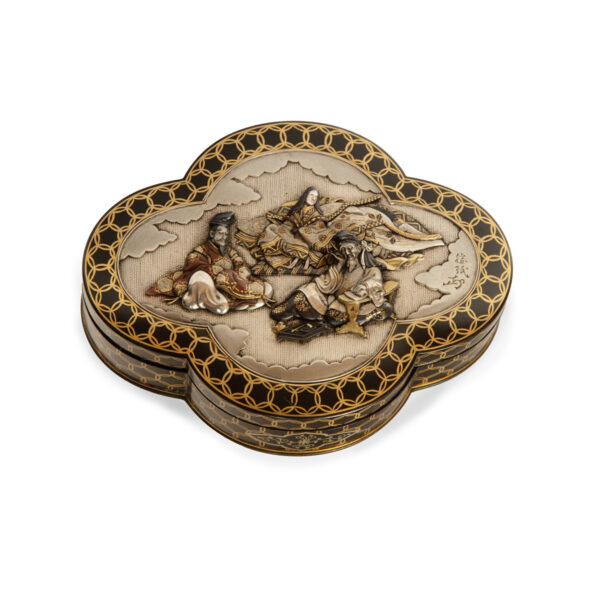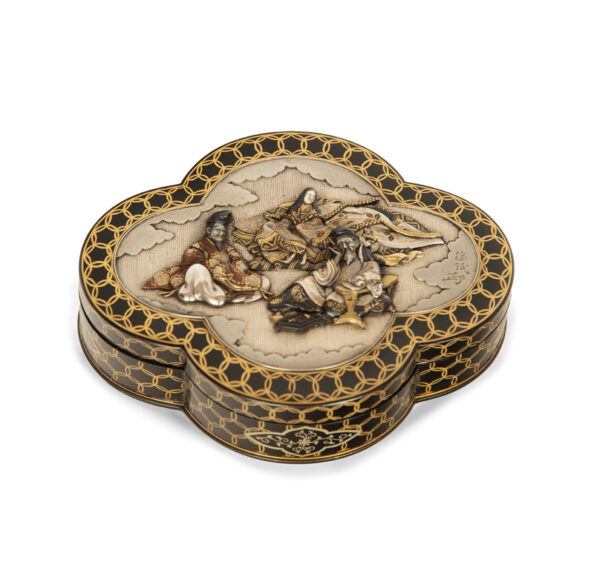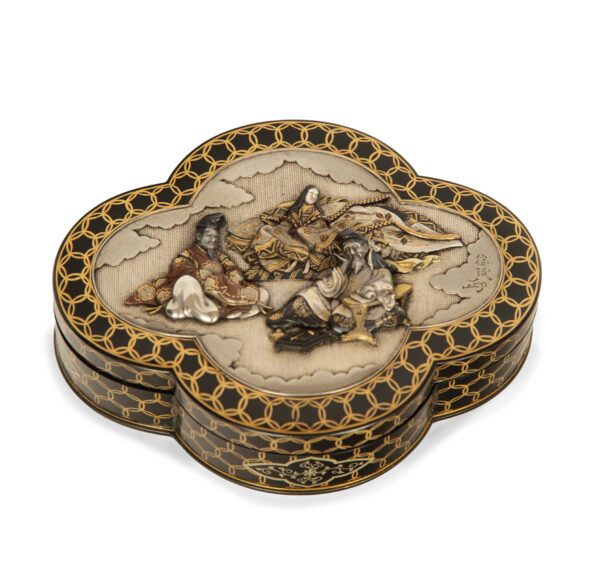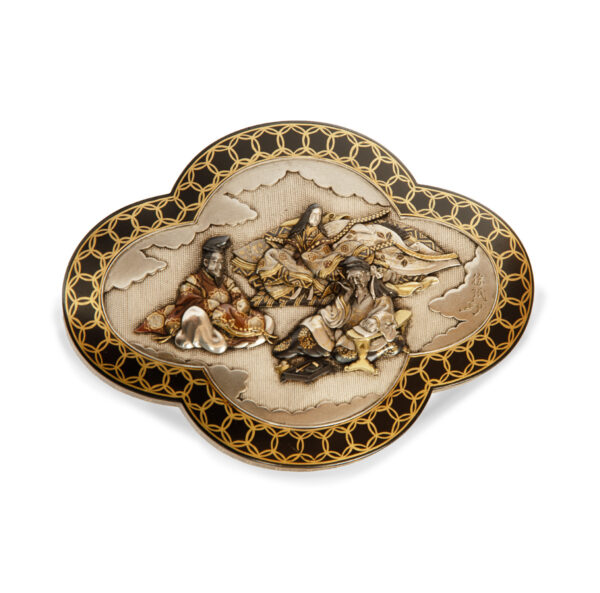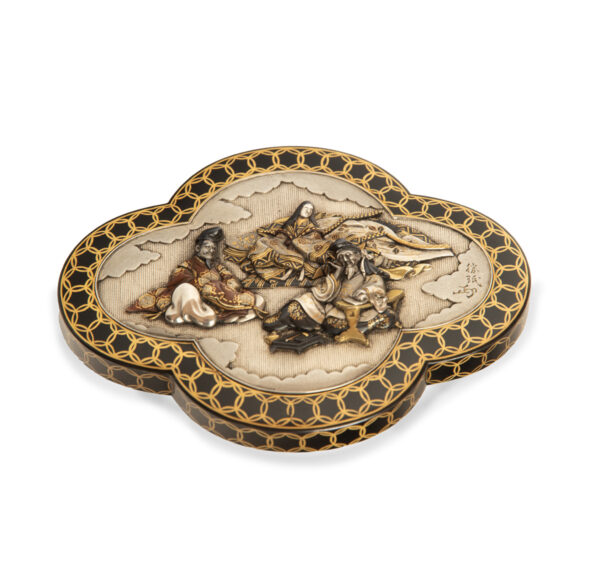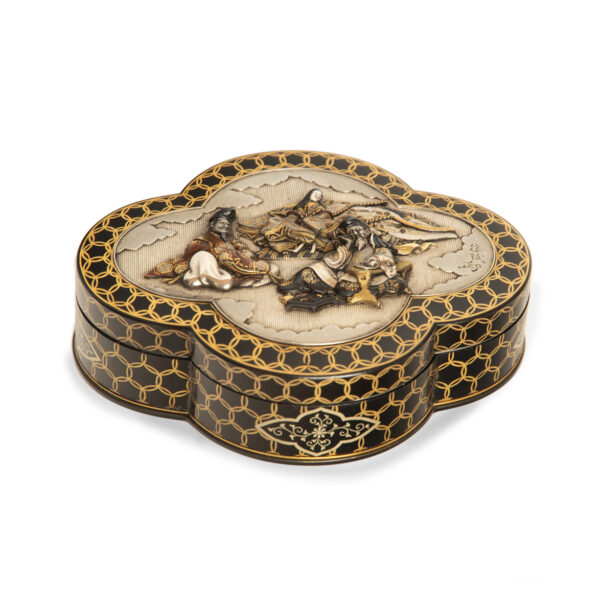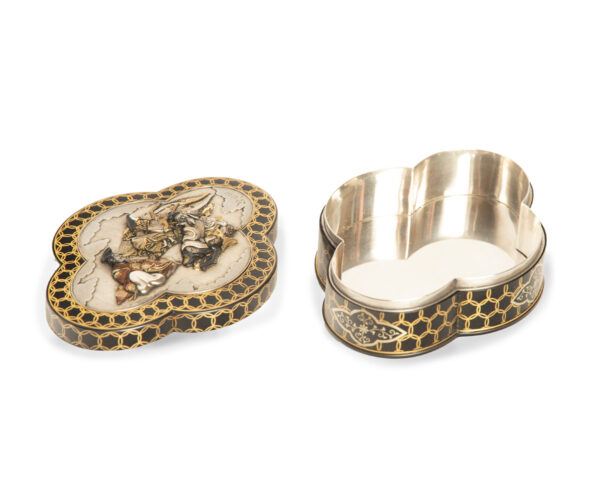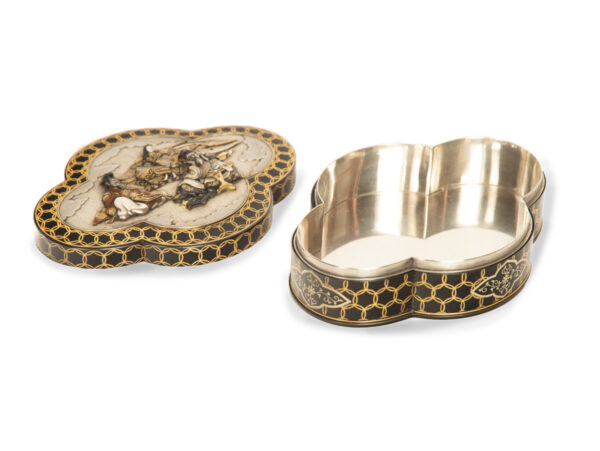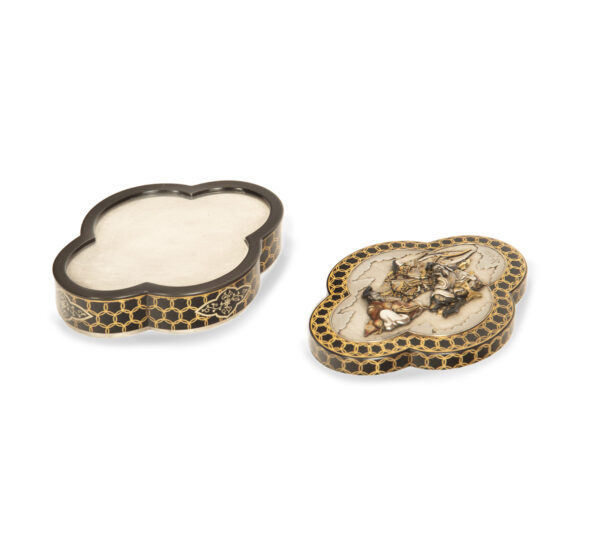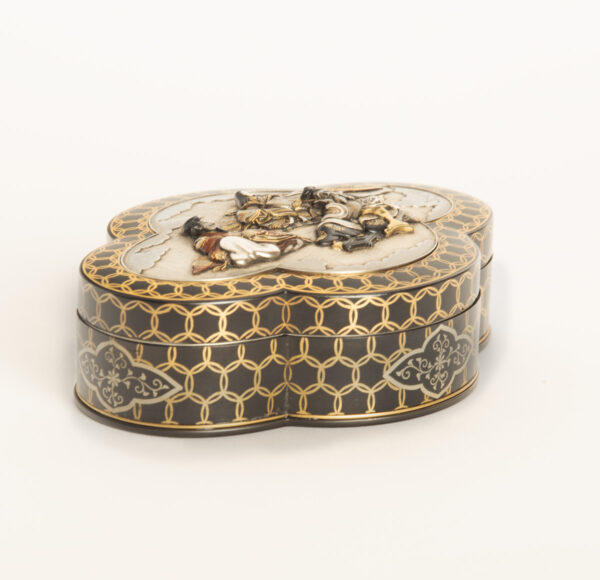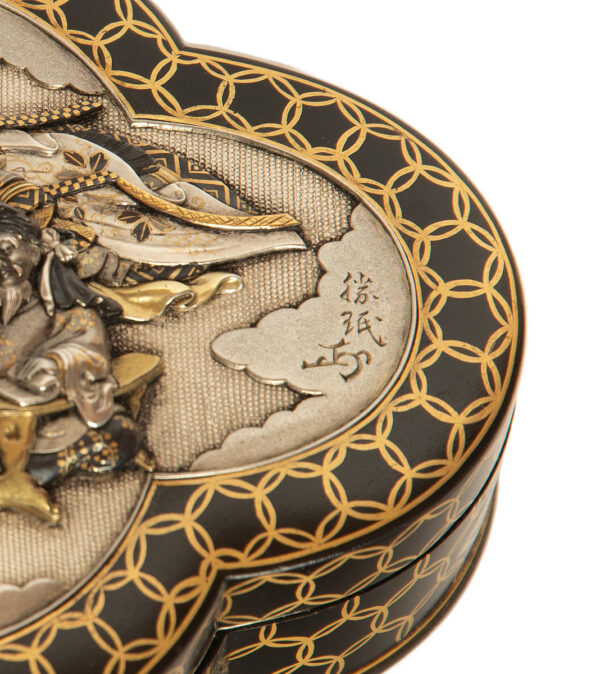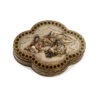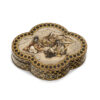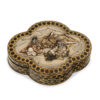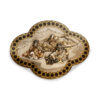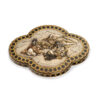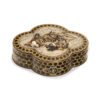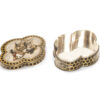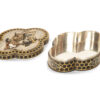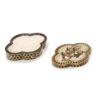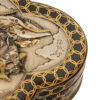As part of our Japanese works of art exhibition we are absolutely delighted to offer this incredibly scarce Meiji Period (1868-1912) mixed metal lidded box by arguably the greatest metalworker of the period, Unno Shomin (1844-1915) . The box of complex quatrolobe form is predominantly manufactured from shakudo finely inlaid with interlocking circles of pure gold, the pattern further interspersed with floral cartouches, the interior and underside of the box lined in pure silver. There is no doubting the hand of the sword fitting master Shomin when studying the lid of this box, a “tour de force” of soft metal chiselling and complex inlaid alloys portrays a scene of three of Japan’s most famous poets (see literature) upon a finely hand stippled Nanako ground. The workmanship particularly to the inlays of the gowns is simply breathtaking. Here Shomin has employed all of his skills as a former Mito school sword fitting master, resulting in a jewel of a box that will stand up to the strictest scrutiny of the most fastidious Japanese metalwork aficionados. Shomin has signed the lid of this masterful box with a chiselled signature above his trademark Kao.
Literature :
Unno Shomin is perhaps the most famous of the generation of metalworkers who started their careers in the sword-fitting workshops of Mito, he moved to nearby Tokyo in the early Meiji era, changing his name from Motohira to Shomin. He showed great promise from an early age, studying calligraphy and painting in addition to chiselling, and was soon awarded the art-name Shomin, “superior to [So]min,” in the expectation that his work would one day excel even that of Yokoya Somin (1670–1733), a famed mid-Edo-period master.
After the samurai privilege of wearing two swords was revoked in 1876, Shomin threw himself into the development of new types of products for both Japanese and international customers, he frequently exhibited his works at expositions inside and outside Japan. Shomin served as a professor at Tokyo Art School and in 1896 was appointed to the order of Teishitsu Gigeiin (Artist-Craftsman to the Imperial Household)
The charming subject matter depicts Ono no Komachi, Kakinomoto no Hitomaro and Ki no Tsurayuki. Three of Japan’s great immortal poets of the Heian Period. Kakinomoto no Hitomaro is often portrayed in his contemplative pose to strike up waka poems.
All three are included in the Six Immortal Poets (Rokkasen) and also the thirty-six immortal poets (Sanjurokkasen).
Provenance:
Japanese Metalwork Collection.
Condition report:
Fine condition.
Approximate Sizes :
Length : 3 3/8″ 8.6 cm
Depth : 2 1/2″ 6.4 cm
Height : 1 1/8″ 2.8 cm
Free worldwide delivery and a certificate of authenticity are included within the price of this item. ep 87
